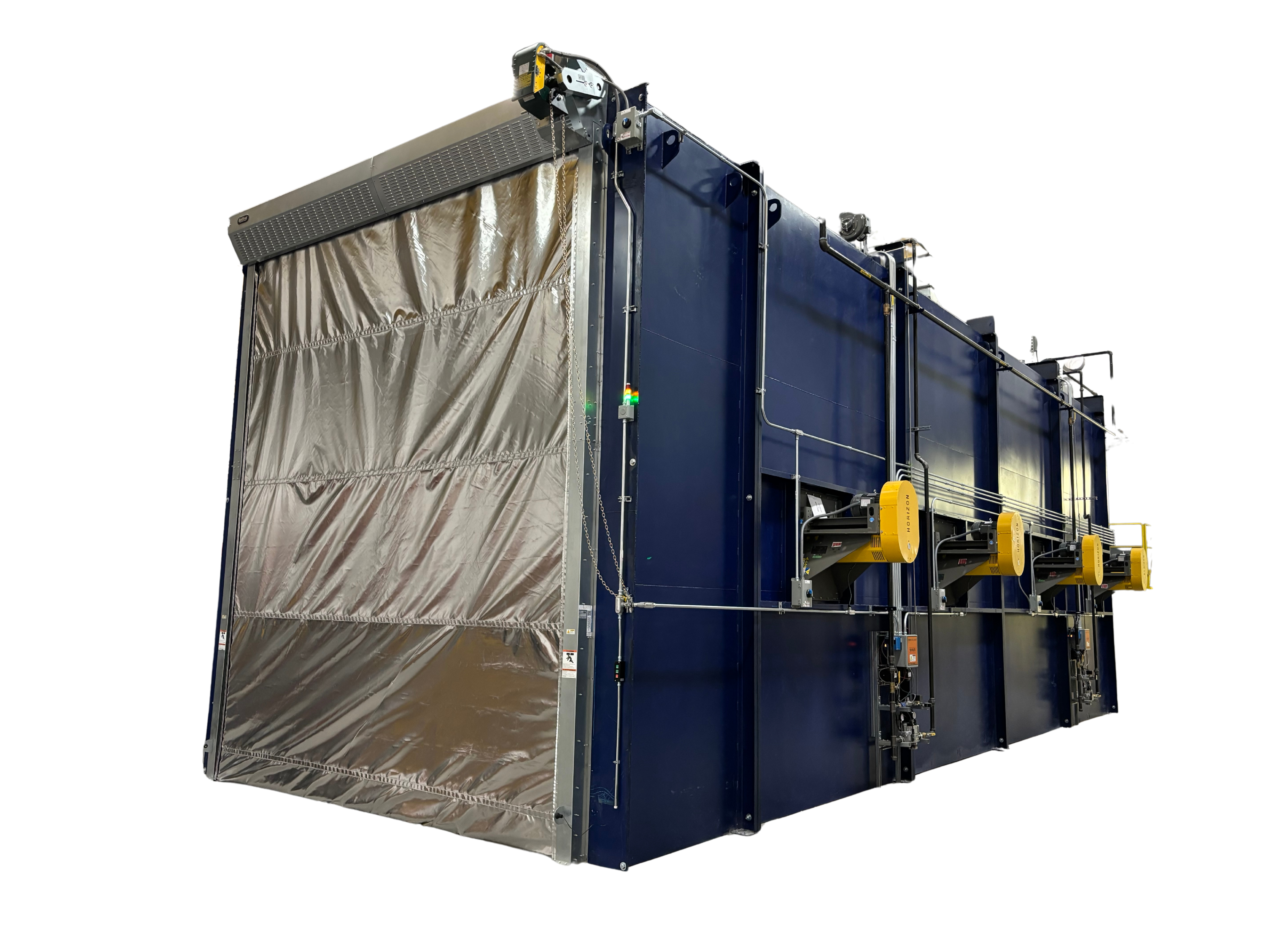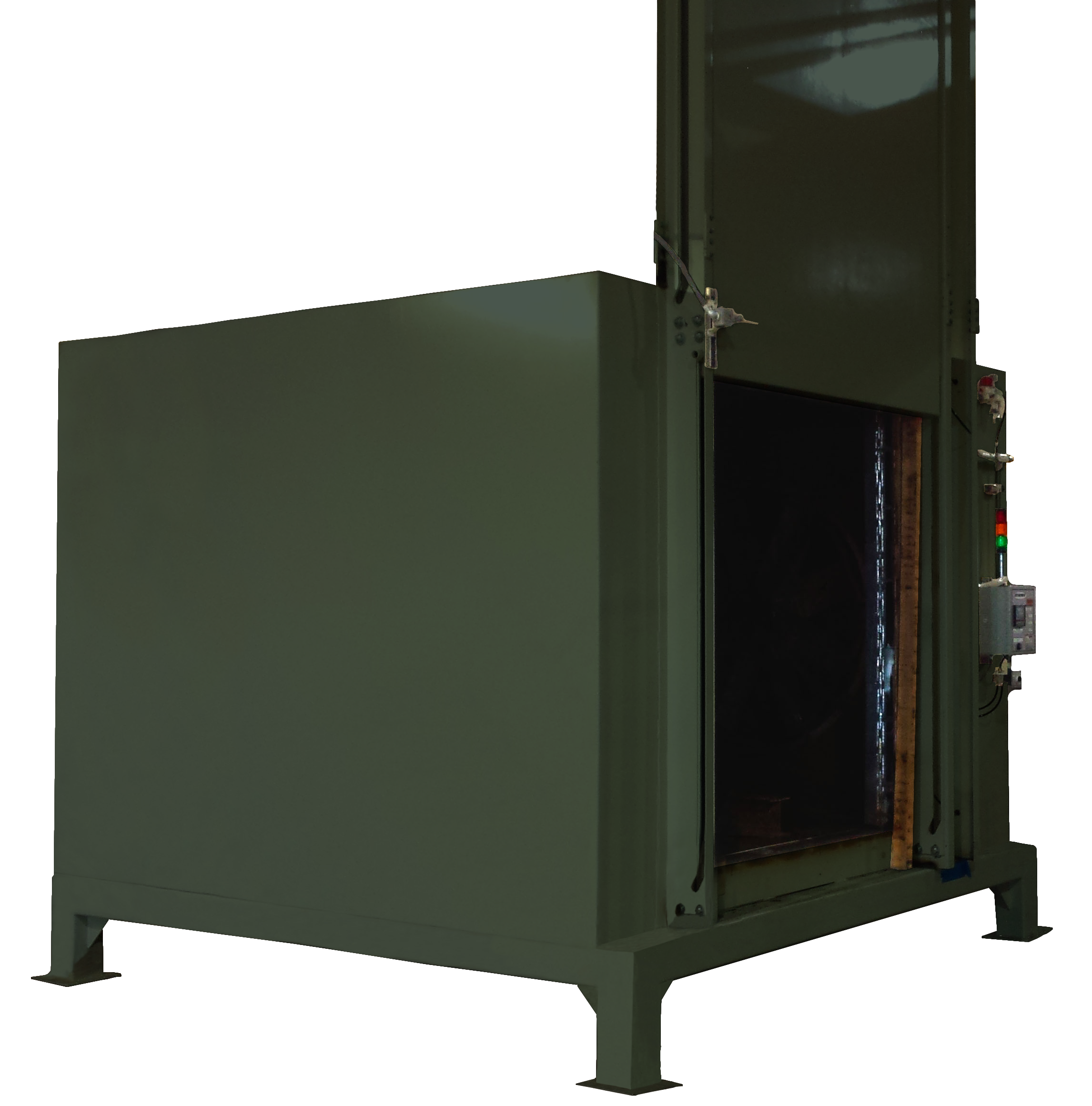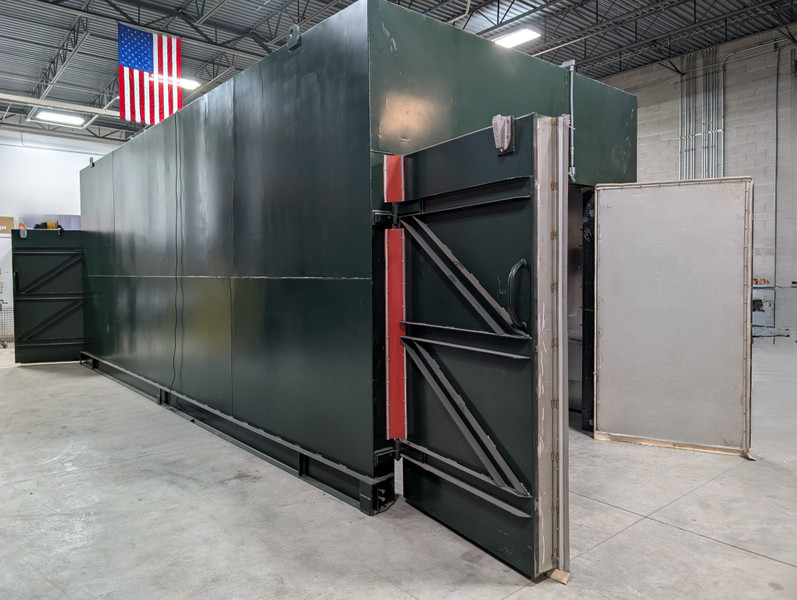When it comes to industrial oven design, the importance of selecting the right door type is often underestimated. Yet the door is one of the most critical components in terms of heat retention, process efficiency, operator safety, and long-term durability.
At Horizon, we understand that every industrial process comes with unique demands, which is why we offer a range of oven doors — from simple swing types to fully automated vertical lift and roll-up options — engineered for maximum performance, efficiency, and safety.
Proven Door Designs for Industrial Applications
Among the wide variety of oven door designs available in the market today, only a few have proven themselves as industry standards. Manual or powered swing doors are the most commonly used due to their simplicity, reliability, and cost-effectiveness. Vertical lift (or guillotine-style) doors are also a top choice, especially in environments where space is limited or where high-frequency operation demands automation. For large walk-in or batch ovens, sliding and bi-folding doors provide wide access while minimizing interference with surrounding equipment. Horizon has refined these popular door styles to deliver better heat retention, smoother operation, and safer, more ergonomic access.
Enhancing Energy Efficiency Through Better Sealing
Door design plays a major role in oven energy efficiency. A poorly sealed or warped door is one of the most common culprits for heat loss and inconsistent temperatures. That’s why Horizon doors are built with the same robust construction and insulation standards as the oven itself. We use high-temp gaskets, tadpole seals, and proprietary door geometries to ensure tight, durable seals that minimize energy waste. Fast-acting powered doors, such as roll-up (environments up to 500°F) or vertical lift styles, also help reduce heat loss by limiting the time the oven is open during loading and unloading.

High-Performance Materials for Demanding Environments

Matching Door Types to Industrial Processes
Built-In Safety Features and Automation
Maintenance and Long-Term Reliability
A Critical Component of Oven System Performance
Industrial Oven Door Types: Comparison Chart
|
Door Type
|
Description
|
Common Uses
|
Pros
|
|
Swing Doors (Manual/Powered)
|
Hinged door single or double.
|
Batch ovens, curing, walk-in ovens
|
Simple, low-cost, durable, easy to maintain.
|
|
Vertical Lift (Guillotine)
|
Door lifts vertically above oven opening.
|
High-temp ovens, tight spaces
|
Space-saving, automated, ideal for large/heavy doors.
|
|
Bi-folding Doors
|
Two doors swing or slide apart
|
Walk-in ovens, aerospace curing
|
Wide access, ergonomic for carts or large parts.
|
|
Roll-Up / Coiling
|
Door coils above the opening, often automated.
|
Conveyor ovens, batch ovens up to 500°F
|
Fast, compact, reduces heat loss.
|
|
Sliding Doors
|
Doors slide sideways (horizontal or telescoping).
|
Space-constrained or continuous ovens
|
No swing clearance, smooth operation.
|
|
Clamshell / Flip-Up
|
Top-hinged door flips up like a clamshell.
|
Low-clearance conveyor/batch ovens
|
Compact, good seal, quick access.
|
|
Curtain Doors
|
Flexible air, fabric, or strip-style doors.
|
Continuous ovens, drying tunnels
|
Minimize heat loss during transit, low-cost.
|
|
Explosion-Relief
|
Designed to release under pressure buildup.
|
Powder coating, flammable processes
|
Essential safety latches for volatile materials.
|
|
Custom-Engineered
|
Hybrid or tailored designs for unique needs.
|
Aerospace, composites
|
Optimized for space, function, and safety; fully customizable.
|


